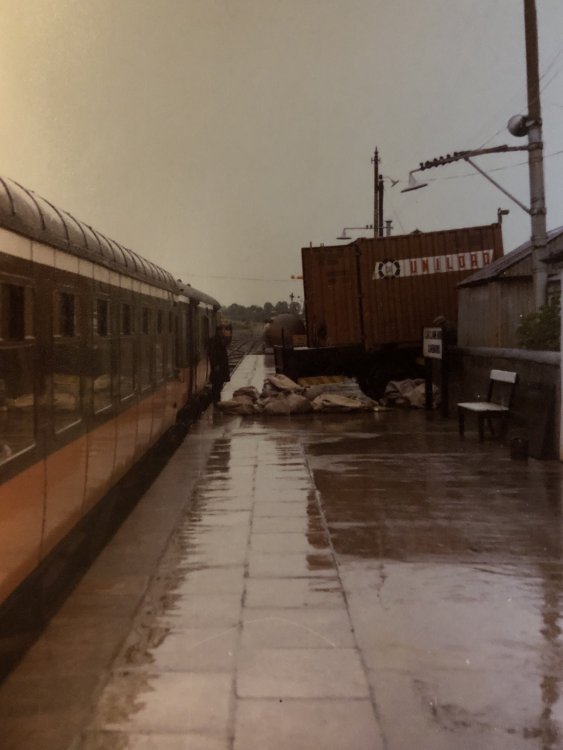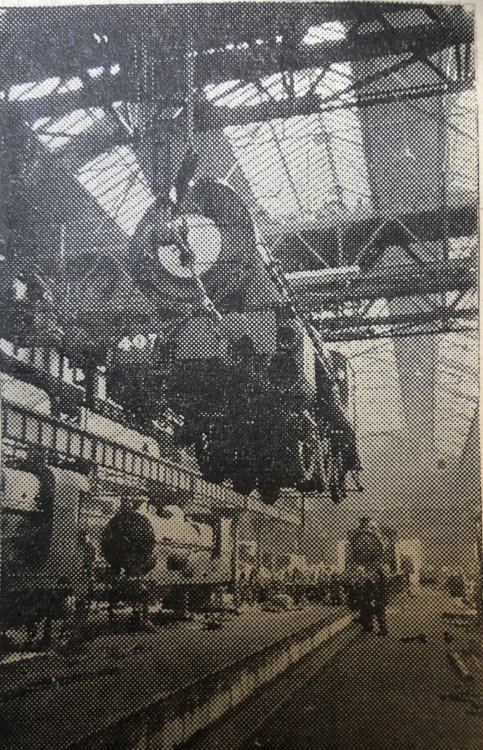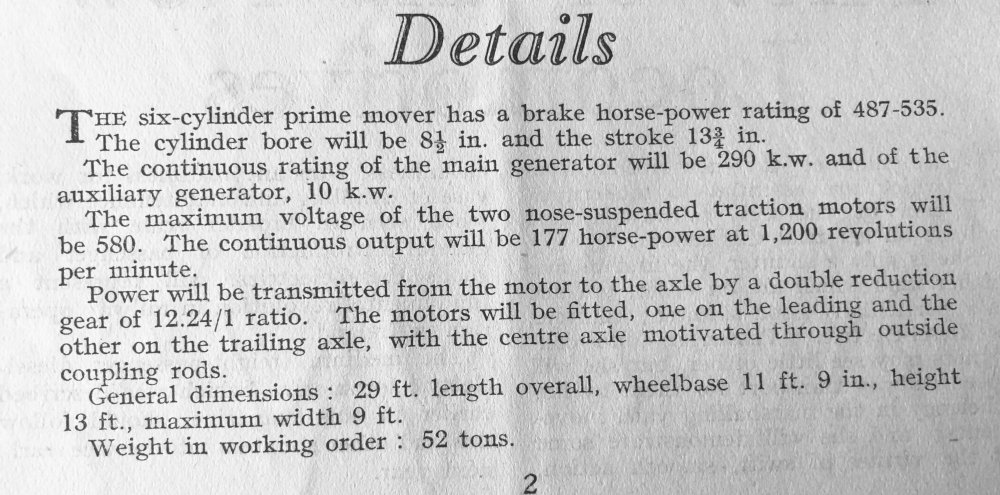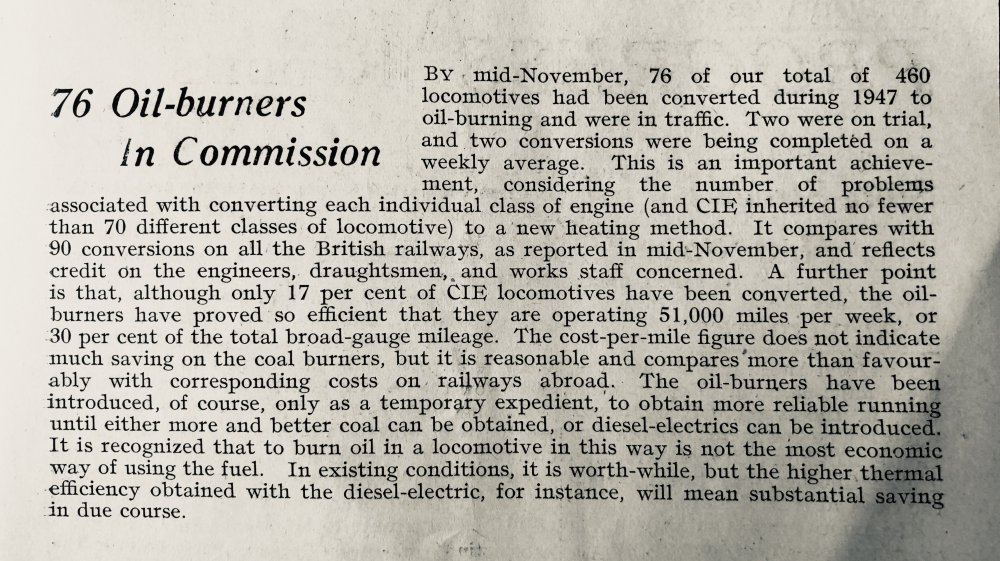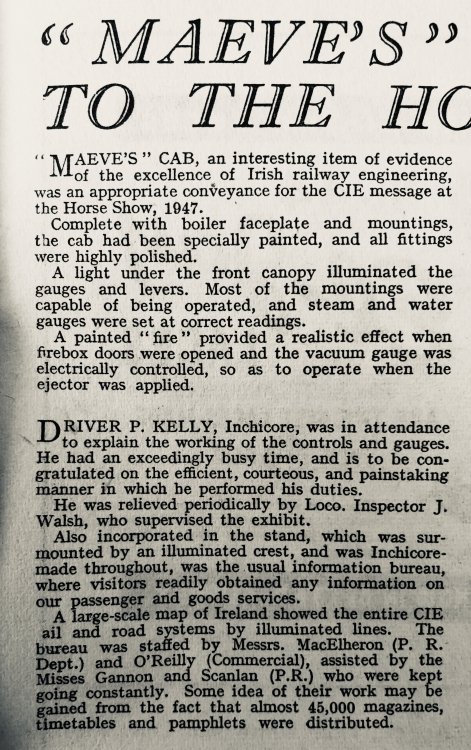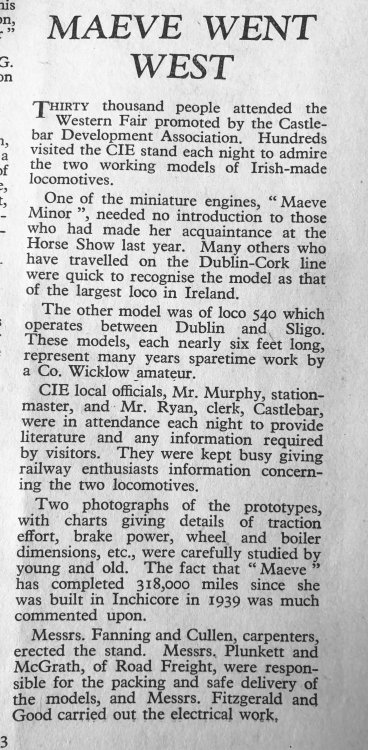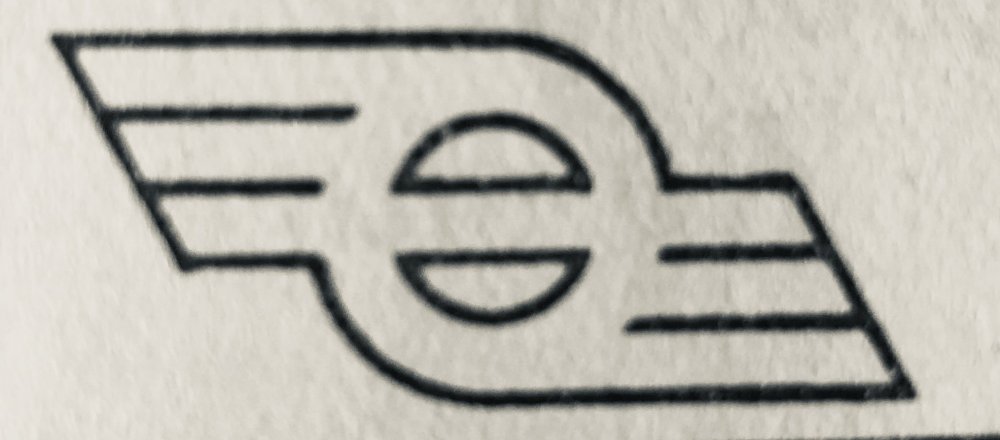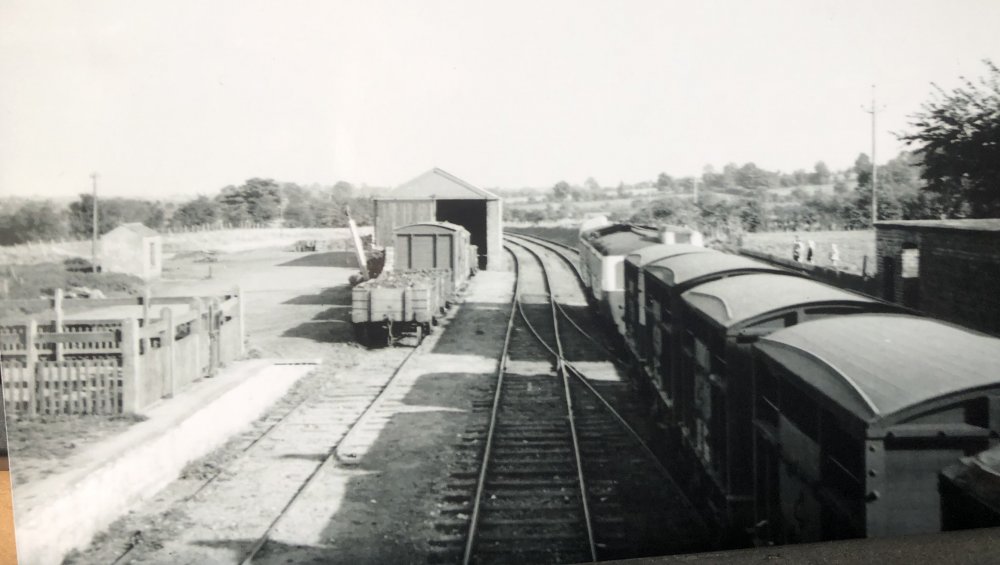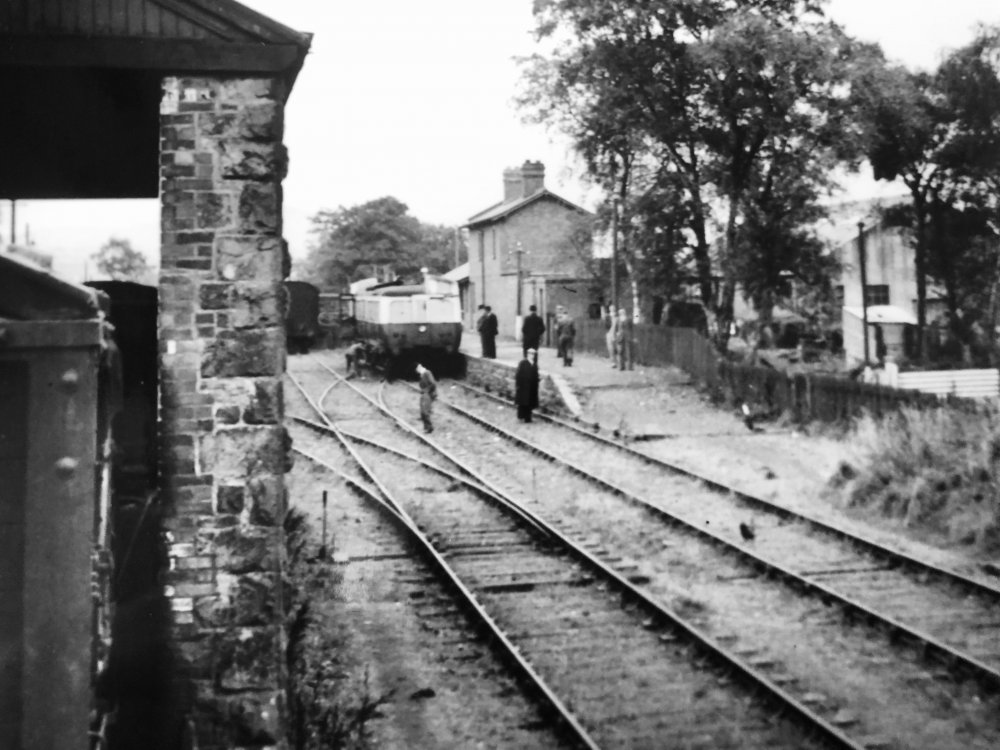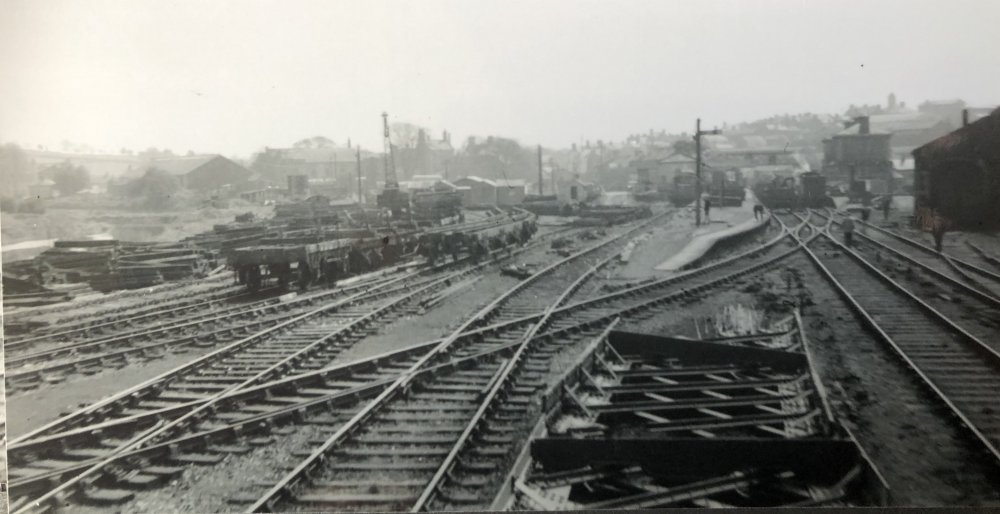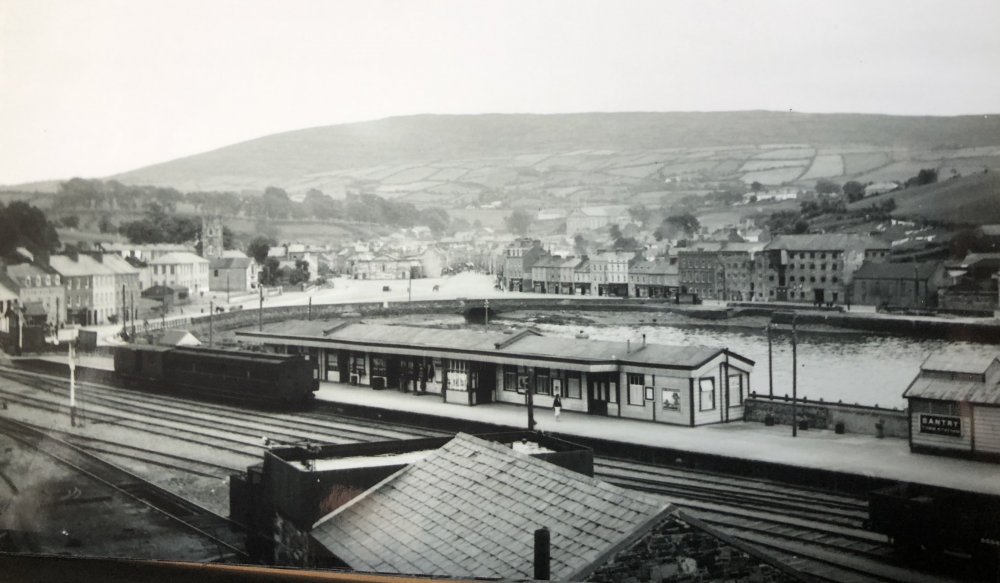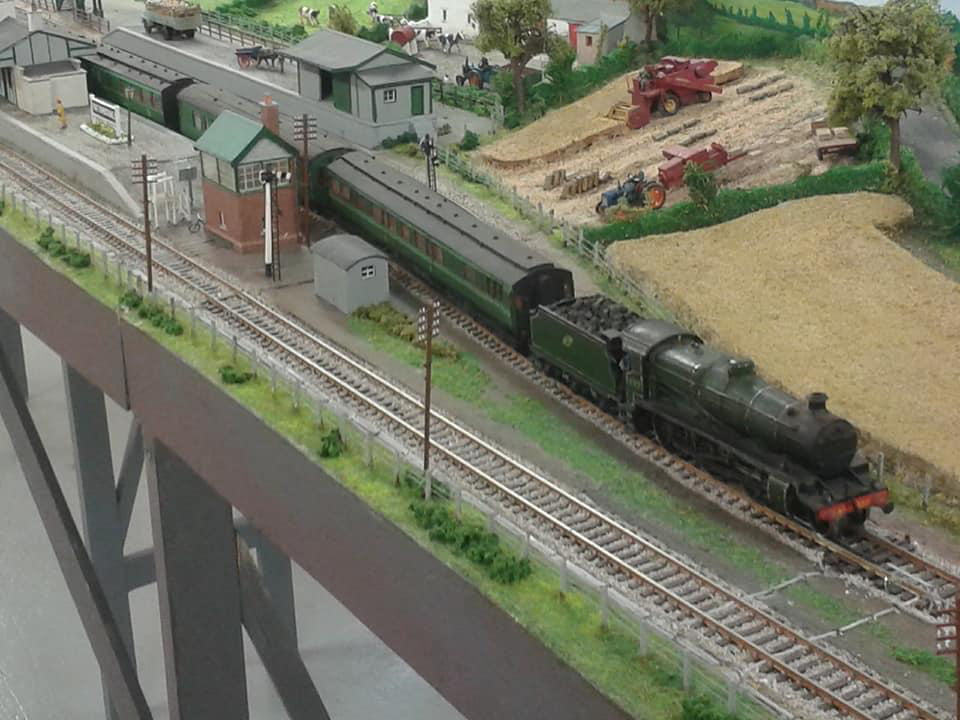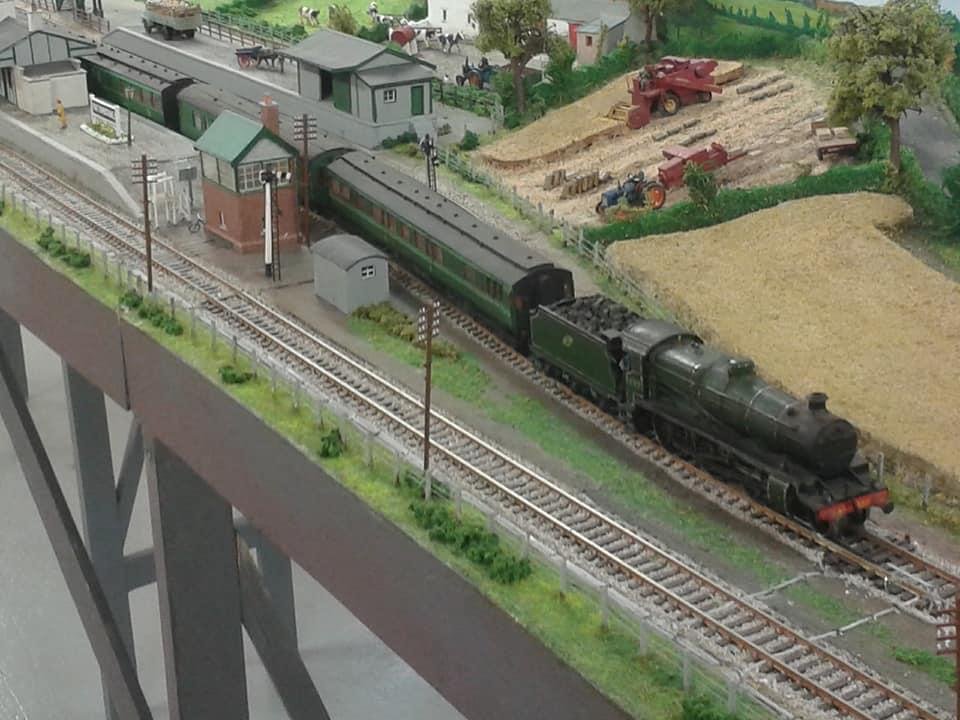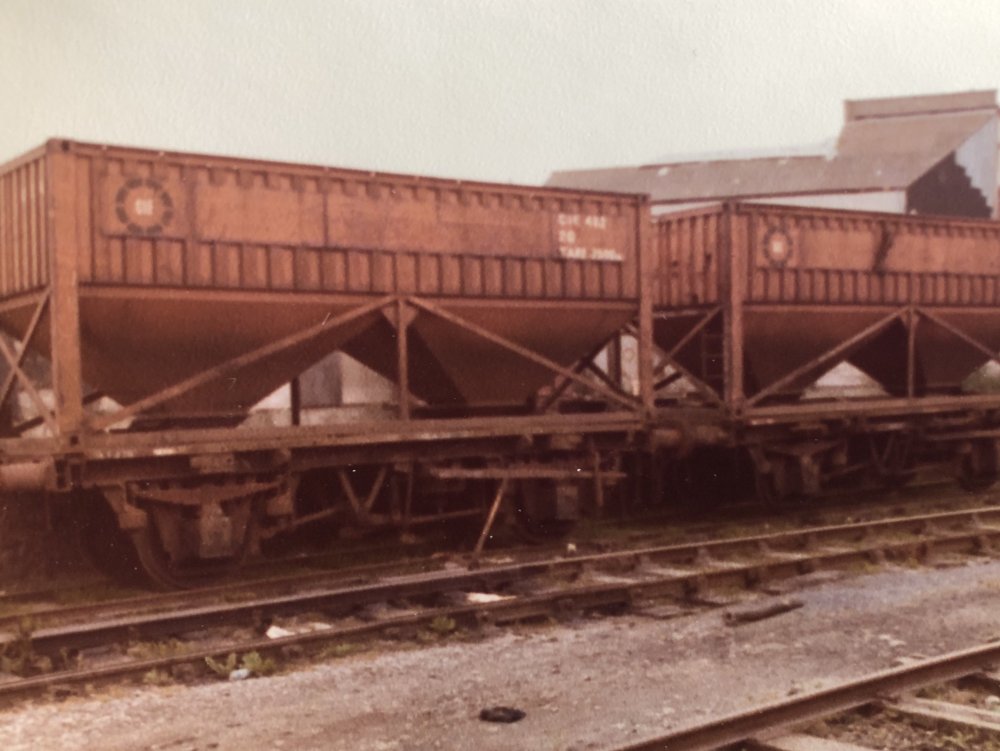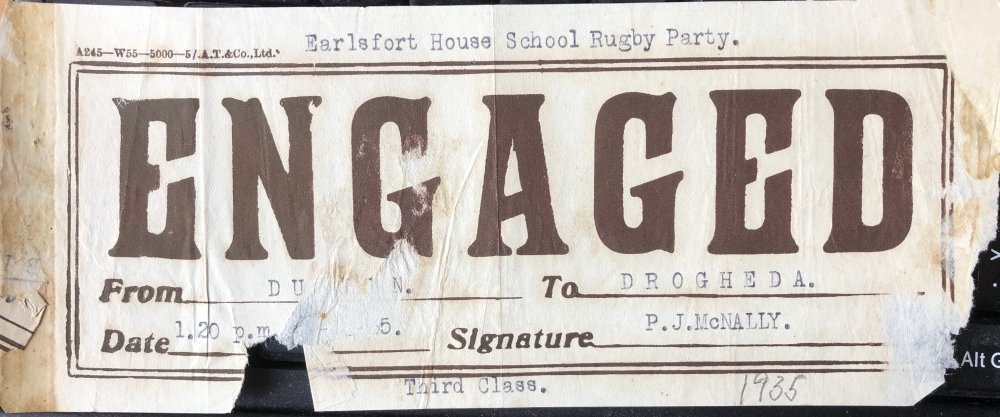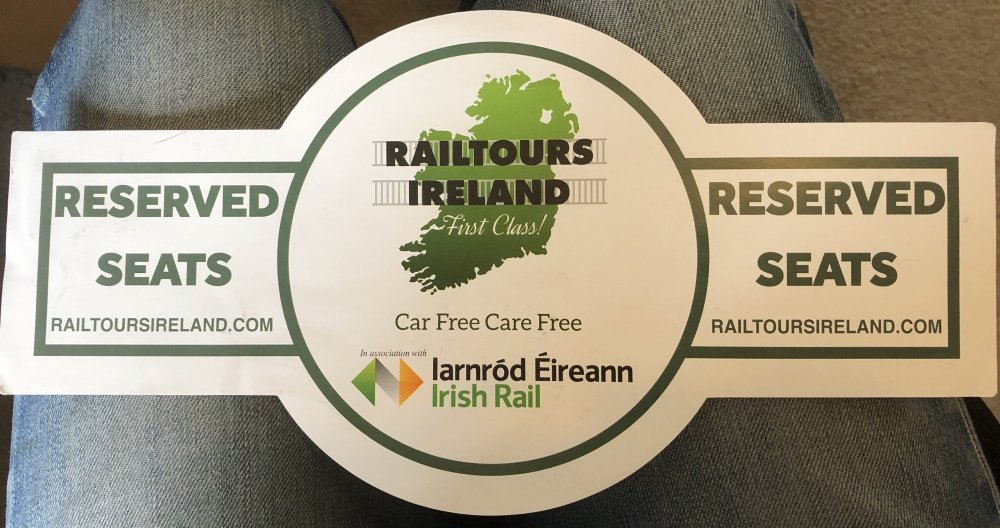-
Posts
15,815 -
Joined
-
Last visited
-
Days Won
393
Content Type
Profiles
Forums
Events
Gallery
Blogs
Store
Community Map
Everything posted by jhb171achill
-
A once common sight all over Ireland, loading mailbags are rural stations. This is Claremorris, 1976. Any thoughts, anyone, on the mailvan?
-
Very possibly. He inspected both, but I have a notion he did the other in the cab of a light engine or an empty wagon special, cattle or PW working or something.
-
Cuisle na Tíre (“Ireland’s Transport Magazine”)
jhb171achill replied to jhb171achill's topic in General Chat
Work in Progress 1947 Oil buying steam locomotives, and the genesis of the “1100” or “D” class shunters.... -
Function “7” sends a grey one down the Mallow-Waterford line with a string of oul loose-coupled trucks! (I hope...!)
-
What happened to THESE models, I wonder? From 1947 Cuisle.... I never heard of these. Anyone? Interesting that both articles use the English version of the locomotive’s name.
-
It’s a GSWR bogie, originally built for main line use Dublin - Cork. In modelling terms, there quite a few differences in design with the English GWR - most particularly the latter having bowed-in ends, a feature the GSWR never used. Your comment got me curious about it, so I did a bit of delving. The clerestory roof is the key; Ireland had very few of these, though they were common in Britain, especially on the MR and the GWR. This is a third class coach, either one of three open but non-gangwayed examples built in 1901, or one of 12 of the exact same design but with gangways, built 1901/2. Initially, my searches concentrated on composites, because I would have considered it much more likely it contained first and third class accommodation. It probably did normally, but why a coach like this was on it on this day, I don't know. It is not a composite coach. It is not possible to make out (certainly with my eyesight) whether it is one of the ones with corridor connection (not that they'd be any use on a one-coach train!) or not. The van with it is very hard to make out, but looks like a particular CBSCR brake six-wheeler that I’ve seen pics of. Senior did indeed do modelling - he had a massive coarse scale 0 gauge layout. Like most modellers, he never got it finished - and he lasted until almost 98!
-
I’m having fun going through them..... many I haven’t even looked at in 10 or 15 years..... I will have to get the colour stuff scanned. There’s not much of it, and little is “groundbreaking”, but if anyone knows someone who knows someone.... Same with the black’n’whites. Judging by (MANY more) family photographs, as well as these, he only got the colour camera about 1961 or so. Given the memories he had of what you’ve been seeing, it’s easy to appreciate that an A class, silver or not, on an Enterprise of mixed GNR and CIE laminate stock - interesting as it is to us - just didn’t even begin to float his boat! And with four young children, a wife and a resident mother-in-law to provide for, he hadn’t time to go gricing! I do remember going to Dungannon with him one day - no photos. And standing on the footbridge at Stranorlar just after they’d lifted the track on another. No photos. That day, we also visited Strabane (up on the footbridge again) and Foyle Road station in Derry, where he showed me the crack in the platform from when the runaway train in the 1950s had walloped the buffers - and continued! Noooo photos.....!
-
Found this, summer 1938. Relating to senior’s trip on the West Clare when he took the pic of the loco above, this was his guide for the day: I suspect he went down on the 7.15 goods and came back on the 11.40 passenger from Kilrush.
-
Draperstown, I believe, but possibly Dungiven; can anyone advise? Again, I haven’t the notes. Some day I’ll dig them out. I might do a talk to the record society on this stuff if I EVER get time to properly put it together. So, today a few station views emerge from the mysterious depths: 1. This is on the Derry Central, but I’m not sure where. 1944, I believe. One of the NCC railcars is parked next to the line of wagons. Senior is out on a line inspection, and this is his chariot for the day. 2. Dungiven, I think, but see above. Same inspection trip; railcar at buffer stop. I think this was the car which was also used some years later for an IRRS trip, but I doubt if it got to here, though I am not sure; any clarification on this point welcome. 3. Banbridge, 1956. Line about to close from Lisburn, the service now ending here after a short time ago they truncated the service on to Newcastle. Newcastle and the main station are straight ahead. Lawrencetown and Scarva are behind. The line to Dromore, Knockmore Junction, Lisburn and Belfast, curves sharply away to the left. All around are track materials recovered from the Scarva branch. 4. Bantry, Co. Cork. The passenger set sits at the platform, and consists of a van along with a beauty of an old GSWR clerestory-roofed vehicle, evidently still in the early very dark brownish nation of the GSR. This picture dates from about 1937-9.
-
Wexford Model Railway Club's Annual Exhibition 2020
jhb171achill replied to Irishrailwayman's topic in What's On?
It’s further back in this thread, MM.- 20 replies
-
- 1
-

-
- model railway exhibition
- annual exhibition
- (and 2 more)
-
Don't worry, MM, were all entitled to our opinions! As one who became involved with it (long after the planning aspect was done, dusted and cast in stone, I agree with comments made by many. Visitor reactions have been mixed, but as I say it opened far, far too quickly, and much has yet to be done. The cabinets are not to my liking either, but it is what it is and the challenge is to make the best of it. My role going forward is to try to enhance the historical side of it. I’m working on this at home, along with those who will have the purse strings and those who will be operating it. If they accept what I want them to, the stuff stuck on the walls will be very much enhanced. I’ve a guide book completed and I’m working on further descriptions on all of the display case captions. Mr & Mrs Public currently see a model and beside it the caption says “C D R Railcar No. 10”. That means nothing to them. All the captions need to re-done, in this case, for example to say it was built in 1932, withdrawn after 17 years in Donegal, and is now in Cultra. Also, where the CVR went, where the thing ran. With “internment” continuing, I have a years’ work ahead, I dare say. I’m doing stuff for nearby Newbridge House too, on behalf of the same management.
-
Wexford Model Railway Club's Annual Exhibition 2020
jhb171achill replied to Irishrailwayman's topic in What's On?
- 20 replies
-
- 1
-

-
- model railway exhibition
- annual exhibition
- (and 2 more)
-
Something like that - not exactly sure what was in them!
-
The wages of the staff are paid by Shannon Heritage, whose brief is to operate what they've been given. It is, as I've mentioned elsewhere, very much still a work in progress. Most of the "Castle" models will eventually be on public display, with some in Malahide and others in several other locations, with whom arrangements are currently being explored. A very good alternative to just stuffing them in boxes in Malahide's attic!
-
It seems to have had some sort of beige-y buff colour then - again, not authentic at all, but painted up for an Inchicore Open Day - admittedly be CIE! So you might argue it was a "real" livery in that sense only - but again, no more like anything either it or anything else ever carried before.
-
Good stuff, DSERetc..... must consult that book indeed, have it somewhere!
-
Correct. 184, at the 1996 open day, was painted like a fairground attraction. Looked quite nice, but historically about as accurate as painting it in NIR blue and silver with a translink logo on it.................
-
Must have been the Brazen Head....Dublin's oldest......
-
Senior learned Latin in school in Dublin - but that was in the 1930s! I've never heard of anyone north or south learning Greek...... maybe posh places like Belfast "Inst" or the King's Hospital, Blackrock College or Portora! Such a thing would never have been much use in ordering a pint of Guinness down the road here (back in the day when we had pubs....remember pubs?) "Ipsum Flotsam Bignum Bognum Jetsam Guinness, please"
-
Grain wagon, Rock St., Tralee; ex-GNR goods van built 1954 for Drogheda cement traffic, also at Rock St. You can clearly see the “N” of “G N” on its side, showing through the CIE brown paint, and CIE grey paint under that. Both 1976. And reservation labels 85 years apart.
-
Yes, I believe it is Thurles - not long after, this relic appeared in Inchicore. And yes, it was a remarkable survivor in its lettering and livery, as well as the more obvious fact that it even existed at all. From recollection, it was built as a passenger brake in - I think - 1878, though the panelling style suggests a decade earlier. It remained in what looked like black, but was in fact a VERY weather-worn old GSWR crimson lake. I've seen a colour picture of it, and it looks a nondescript dirty black at first glance. The old paint was, of course, perished as well as worn by then. It was tragically scrapped shortly afterwards; yet again, when i see a beast like that, I think "Downpatrick"!. You can see where someone has tried to clean over the letters "G" and "W" "R", either side of the central door - maybe the "S" was less visible. So it hadn't seen a paintbrush in at least 35 years, and probably a lot longer. The only modernisations seem to be vac brakes and blocked-in "birdcage".
-
PRICELESS stuff, Ernie, well done! Observations: 1. GNR Dundalk - what is that grounded body on the right? A former Drover's Van, perhaps? I recall one of those in someone's back garden in a house in Lisburn in the 1960s, but it had its original planking. 2. Strabane, 1958. What is that bogie van on the left? I don't think it's one of the two grain vans that went to Whitehead 9or is it?) but it is certainly similar. What is it, what was it used for, and what is it doing in Strabane? 3. West Clare, Ennis. I had forgotten there was an awning on the up platform! On the down side, the girder on the WCR side is still extant, and would be for many more years - but has anyone ever seen a pic of the roof that at one time it supported - I have no recollection of any such picture. I presume the WCR built it? Does anyone know? 4. 406 at Cork - above. Clearly just after getting her green paint. Must have looked absolutely magnificent.
-
Yes, that was absolutely the norm - I think I referred to that in a recent post too, when my father had been involved (unofficially) in just such an operation. Crossing keepers and station staff would be advised that a goods train might be running a certain amount of time late, and it would be because they had stopped along the way at a point identified previously. The SLNCR was a truly fascinating railway indeed. In the mid 1990s - I may have mentioned this somewhere before - there was funding available to restore a 2km stretch near Belcoo, and it came very very near to fruition - more so than any other "didn't happen" potential scheme I had ever heard of. If anyone is interested in the details, ping me.
-
Re No. 90 in Fermoy & Mallow, and Inchicore Open Day, 1996. Only seeing this now, Midland Man. No, that Isle of Man type light green was totally fictitious, probably copied from the equally “bright” light green colour then in No. 36 in Cork. The correct (and verified) GSWR green was the very dark olive shade now seen on Downpatrick’s GSWR No. 90. The livery on 90 has been verified from original samples seen on an Inchicore-made model held in the Institute of Mechanical Engineers’ offices in London. Downpatrick also have the correct dark brownish-maroon on coach 836, and presumably eventually 69 and 1097 too.
-
Tis indeed a shame the “castle” layout ended up homeless. At least the models have survived! As others have mentioned, no single issue led to the current position. Money, location and local politics all played their part. Most recently, of course, a new museum gets designed before proper consideration is given to the space required for what ought to be in it!!!
.png.c363cdf5c3fb7955cd92a55eb6dbbae0.png)

